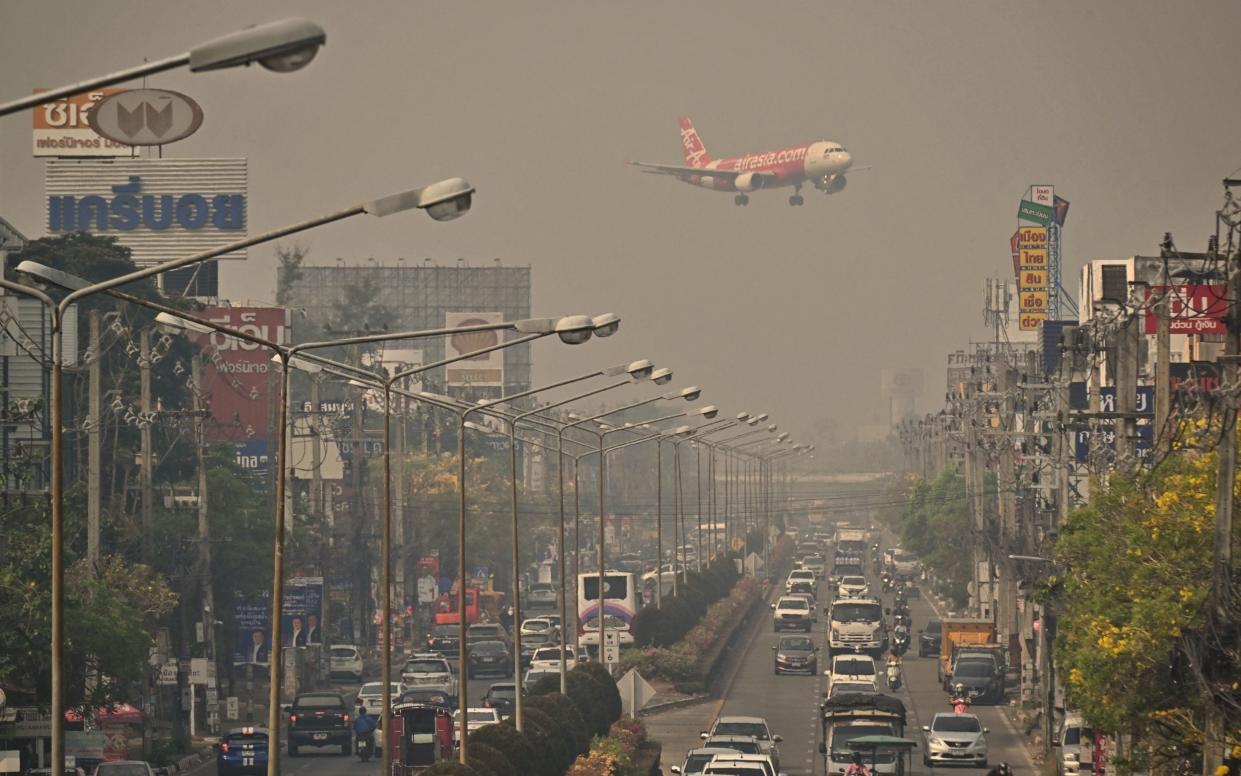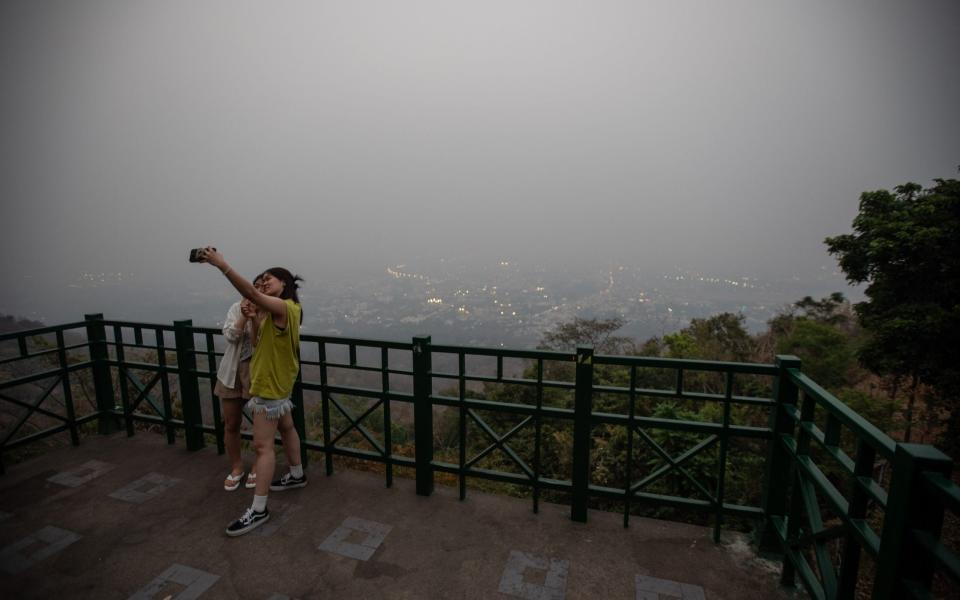How Thailand’s wellness capital became the world’s most polluted city

Six years ago this April, I was lying on the stage of a community village hall on the outskirts of Chiang Mai while an old man massaged my back with his feet, which happened to be on fire.
This practice, known as yam kang, is one of a number of unusual treatments only found in and around Chiang Mai, the Thai city where mental and physical health is woven into the culture like the roots of a banyan tree.
Considered one of the world’s great wellness centres – along with Bali, Goa and Rishikesh – Chiang Mai is home to more than 300 working Buddhist temples, hundreds of massage centres, dozens of yoga retreats, and the leading traditional Thai medical school, which forms part of the University of Chiang Mai’s Faculty of Medicine.
Throw in the bucolic countryside, with its hiking trails, elephant sanctuaries and river rafting, and it’s easy to see why this is a health hotspot. But an essential part of any spa break is the ability to, well, breathe – something that’s very difficult to do in Chiang Mai at the moment.
Tourists, along with a long-suffering local population of about 120,000, are currently wilting under pollution levels more than 20 times higher than World Health Organisation (WHO) recommendations. According to the global air monitoring website IQAir, over the last few weeks Chiang Mai has regularly topped the charts as the world’s most polluted city, outstripping the likes of Delhi, Kolkata and Lahore.
The concentration of harmful PM 2.5 particles (2.5 micrometres or smaller in diameter) in the atmosphere peaked at 136.2 micrograms per cubic metre earlier this month. To provide some context, the reading in London is currently 6.2, and the recommended World Health Organisation safe daily maximum is 25.

Scientists have suggested spending time in such a polluted environment is the equivalent of smoking two packets of cigarettes a day.
Why is semi-rural Chiang Mai suffering so much? ‘Burning season’, a man-made environmental catastrophe that takes place annually, between early February and late April, when farmers – many working with major agribusinesses – use fire to clear land for the next sugarcane or rice crop cycle.
While the practice has been happening for many years, experts say the intensity and duration of the burning season has become worse.
Not so long ago, spring was one of the best times to visit northwest Thailand, thanks to low humidity, little rainfall and cool nights – now it’s a time when the historic city, its golden stupas and the surrounding countryside are smothered in a thick grey blanket of health-endangering smog.
“These figures – PM2.5 and PM10 – sound innocuous but most people don’t realise that these are miniscule particles that are impossible not to inhale,” explains built environmental expert John Herbert. “If you’re exposed to these levels long-term, or even for a few months, you’re going to face serious respiratory disorders and possible hospitalisation.”
Short-stay visitors can be affected too, with tourists reporting cases of itchy eyes, nose irritation, skin rashes and breathing difficulties. “I would advise people not to go on holiday [to Chiang Mai] at this time of year,” adds Herbert.
“Especially the very young – kids are 10 times more vulnerable – or anyone with a compromised immune system, asthma or any other respiratory issues. Wellness and PM2.5 readings of more than 200 [as has been seen in Chiang Mai] are a clear mismatch.”

For those who do visit, safety recommendations include reducing outdoor exercise, keeping windows closed, wearing a mask and running air purifiers – hardly conducive to a spa break.
“The recent ranking of our city as the most polluted, along with the media coverage it has received, has undoubtedly impacted our business,” says Anchalika Kijkanakorn, founder and managing director of the AKARYN Hotel Group, which recently opened the Aleenta Retreat Chiang Mai, an idyllic teakwood wing-roofed escape offering traditional Thai therapies and with state-of-the-art facilities on the forested edge of the city.
“As a retreat and wellness-focused hotel our guests are informed about the pollution and actively avoid visiting at this time of year. But to address the concerns [of those that do] we have equipped our guest rooms, as well as our spa, gym and bar, with air purifiers, and are providing masks to both guests and staff.”
Improvements are promised. Concerns about both the long-term health of locals and the detrimental effect on tourism finally prompted Prime Minister Srettha Thavisin’s government to pass the Clean Air Act in January. Last week a more short-term solution was offered by Chiang Mai governor Nirat Phongsitthithawon, who ordered authorities to use air purifiers to create clean air rooms able to provide temporary respite to locals.
However, while current levels haven’t hit the sky-high toxicity recorded in 2023, most believe that more decisive action is needed to support farmers and stop the crop burning.
Until that day comes the toxic clouds currently blighting the city will be back every year, putting the lives and livelihoods of northern Thai residents and visitors at risk.


